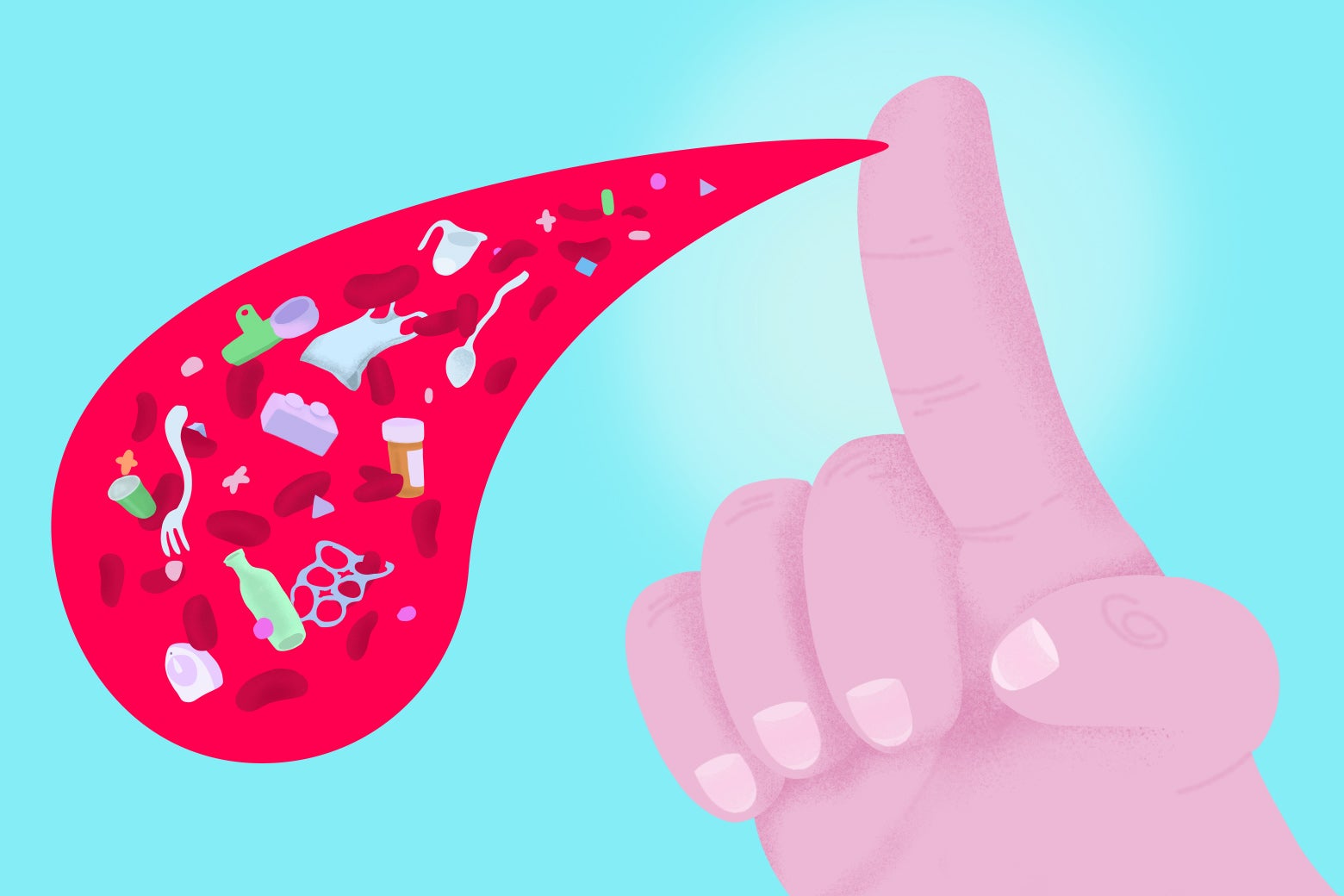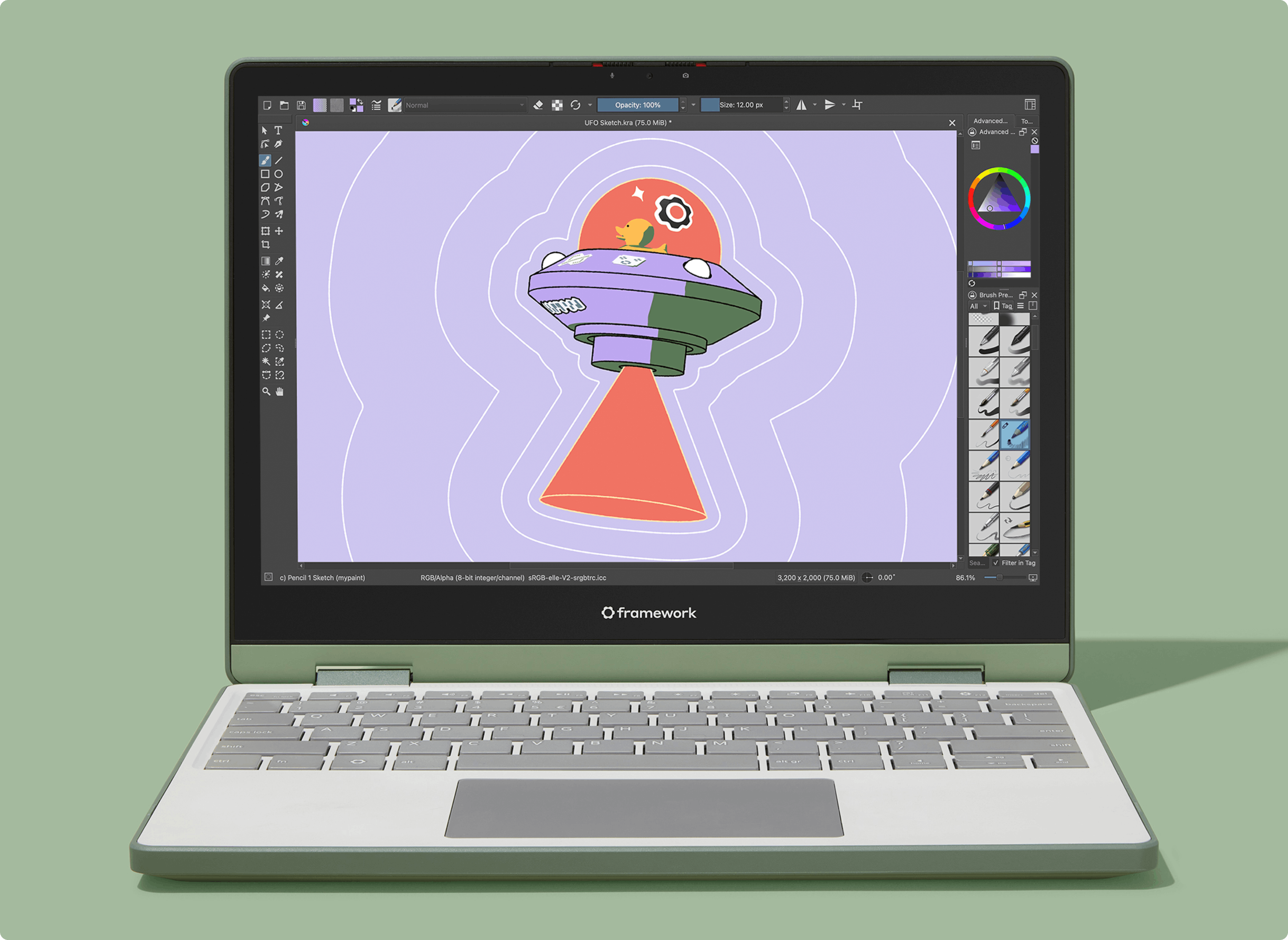What can a $150 home test kit really tell you?

Sign up for the Slatest to get the most insightful analysis, criticism, and advice out there, delivered to your inbox daily.
Please bleed more, I thought, looking at my pricked finger. A drop of blood dangled at its tip, not quite big enough to fall. I needed enough blood to fill a small circle outlined on a piece of paper. Taking a little sample at home had sounded simple when I had ordered this test kit.
“Everyone bleeds differently,” the man on my laptop screen said. I had booked a support call to make sure I did everything right. Apparently I’m not good at bleeding, I thought. “You can use another finger,” the man added encouragingly. “That’s why there are four needles.” I clenched my teeth, aimed the flat triangular needle, and pricked again.
At last, after three pricked fingers, I managed to fill the paper outline with red. Staring down at the circle of hard-earned blood, I wondered: How much plastic is in there?
All the effort was for a microplastics blood test, the first designed to be taken at home. Testing human blood for microplastics is a relatively new thing. Until this home test came out, the process could be done only at scientific research labs, which is not exactly an accessible option for most people. Microplastics are tiny pieces that routinely shed off plastic things we use, like water bottles and synthetic clothing. Over time, they break down, occasionally becoming small enough to test the limits of our measuring abilities. These microplastics are in the air we breathe, the food we eat, and the water we drink. So they’re also in our blood and can even travel to the brain, the heart, and other organs. “Basically, anywhere you look in the human body, you find them,” said Philip Landrigan, a pediatrician and public health physician who has researched plastics and health. Perhaps you’ve heard about the study that found that the brain can contain as much plastic as there is in a disposable spoon.
Perhaps you have also heard of Bryan Johnson, the entrepreneur behind the test kit I was trying out, whose maxim is “Don’t Die.” He’s famous for his attempts to reverse aging, including injecting his son’s blood into his body and, more recently, removing all the plasma in his body to “replace it with very clean stuff.” The routine he shares online includes nearly 20 daily supplement pills. Through his company Blueprint, he sells products based on his regimen, like the $150 microplastics test kit, to people who share his hopes of longevity. “As part of my protocol, I began testing everything that was going into my body: food, water, air and everything else,” Johnson shared in an email. “I learned through testing that we are surrounded by toxins.”
Johnson routinely measures everything from his blood sugar levels to his DNA methylation: a natural genetic change that can be used to estimate the pace of aging. He suggests that everyone else get tested too (though I doubt many will compete with his claim of being “the most biologically measured person in history”). But even as microplastics were becoming a familiar health concern, there was no test on the market for regular consumers. Johnson decided to change that. “A lot of people want to measure their levels of microplastics and it’s never been possible. Things that get measured, improve,” he added.
Having microplastics in the human body does not sound good. To better understand why this isn’t good, I called up Heather Leslie. She’s a scientist who does consulting on environmental and health issues, and she’s an expert on blood-borne plastic specifically. In 2022 she led the research team that found microplastics in human blood for the first time. Microplastics were first observed in humans in 2018, when researchers at the Medical University of Vienna detected them in the digestive system. After that study came out, Leslie felt it was important to check the bloodstream. Finding plastic circulating there proved that it was actually absorbed by our bodies, rather than something that simply passed through us. Since then, microplastics have shot into our collective health consciousness—and knowing that we can absorb them has motivated some, myself included, to cut down on plastic use. I’ve filled my kitchen with Pyrex instead of Tupperware. I quit reusing Ziploc bags. I check clothing labels, looking for natural fibers.
But when, a month after I’d mailed in the bloodstained paper, my microplastics test results arrived, those small efforts suddenly felt meaningless. I had to set up an account on Johnson’s Don’t Die app to view the results. Although the process was simple, it gave me time to become slightly apprehensive and to hope for a low microplastics count. Instead, my small circle of blood had 39—39!—pieces of plastic in it. I had more microplastics than 77 percent of people who had taken the same test. I suspected there were even more pieces floating around in my sample, too small for this test to measure.
Those little bits of plastic could’ve come from anywhere, really. I apply lipstick from plastic tubes. I buy plastic-wrapped fruit from the grocery store. Even my water filter, designed to remove harmful chemicals, is made of plastic. Although I know plastic is a problem, something still feels friendly about the bright-colored toothpaste tube, the crinkly bag of pasta. That’s the result of a life lived among successful ad campaigns, I guess. But putting a number to the microplastics in my blood had me starting to rethink. Suddenly, pollution felt personal. Was it time to stop buying plastic altogether?
Just how microplastics affect us from the inside, and to what extent they do, is actually largely unknown. Leslie says plastic is “like spaghetti with a sauce.” The pieces of plastic are the spaghetti, and the chemicals attached to it are the sauce. Those chemical additives are what give plastic different properties, like color, stretchiness, and flame resistance. Sometimes, the chemical “sauce” leaches out of plastic, a process that, research has shown, can be toxic. When it comes to the “spaghetti,” though, scientists don’t yet know how it affects our bodies. Microplastics could transport those harmful chemicals into humans. Then again, there are lots of ways for plastic chemicals to get inside us. (They’re common pollutants on their own.) It’s difficult to determine whether certain chemicals in our bodies come from microplastics or are features of our environment. And the effects of the microplastics themselves remain unclear. Although some researchers suspect they can cause damage by physically disrupting tissues and cells, it’ll take more investigating to definitively assess their health effects.
Even just getting an accurate measurement of microplastic pieces in the blood is difficult. “If you don’t use a really strong, robust, reliable, repeatable method—reproducible, all these things—then you are going to get a number out at the other end, but it might just be sort of a mythological number,” Leslie told me. Blueprint’s lab partner uses a plastic-free method to test the blood for plastic so that it’s not contaminated during testing. But there’s no way to know whether a sample got contaminated before arriving at the testing location. Leslie notes that scientists usually use a “field blank” for lab tests: an additional sample to show whether the sampling process caused contamination. The home test’s small, single sample doesn’t allow for this safeguard. And it’s all too easy to accidentally taint a drop of blood at home. Even the alcohol wipe I cleaned my finger with could be a source of plastic if the alcohol were ever stored in a plastic container. There’s also the chance I didn’t sanitize my hands correctly. So, for all my effort to get that drop of blood out of my finger, it might not have given me a truly accurate scientific read on how much plastic I contain.
Overall, Leslie believes I shouldn’t draw health-related conclusions from the test. “For an individual result, a one-off measurement like this, we can’t really say anything about how you should be feeling today or if this is going to lead to a chronic disease.” Also, there’s no proven way to get rid of the plastics inside us. (Some experimental methods, like the plasma replacement Johnson has tried, were listed at the end of my test results—but their effectiveness remains uncertain.) “I don’t know of any way to get them out of the human body,” said Landrigan. “It’s nice that somebody’s got a test, but one of the things that we’ve all learned in medicine is you don’t test for stuff that you can’t fix.” Landrigan notes that it is wise to reduce plastic use, as much as you can. “But I can tell you that anyway,” he said. “I don’t need to find microplastic particles in your blood to offer you that advice.”
Taking the test did motivate me to find more ways to minimize plastic in my life. (The results also came with tips for reducing exposure.) I found a cotton cover for my synthetic mattress. I’m on the lookout for natural fiber sponges. Yet … I’ve noticed that even these nonplastic products are often sold in plastic packaging. I’ve also realized that I’m not ready for the expense and effort of an extremely plastic-free lifestyle. While I aspire to buy only fresh, unbagged produce and to replace all my synthetic clothes, the fact is that those alternatives are pricey, and avoiding anything with plastic in it is simply out of my budget.
And even if I never so much as touched plastic again, I’d still be breathing, eating, and drinking countless bits of it too small to see. In a plastic-obsessed society, reducing exposure is only getting harder. In the past 15 years, the world has produced half of the plastic ever made, and production is still speeding up. A global plastics treaty is being negotiated, but it’s not clear if it’ll lead to meaningful action to reduce the plastic in our lives.
All of that makes the test, and my results, basically just a fun little story to tell about that time there were almost 40 pieces of plastic in a couple of drops of my blood. Maybe it’s the perfect anecdote to share the next time I’m at a party, holding a plastic cup.
Sign up for Slate's evening newsletter.









 English (US) ·
English (US) ·